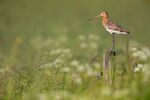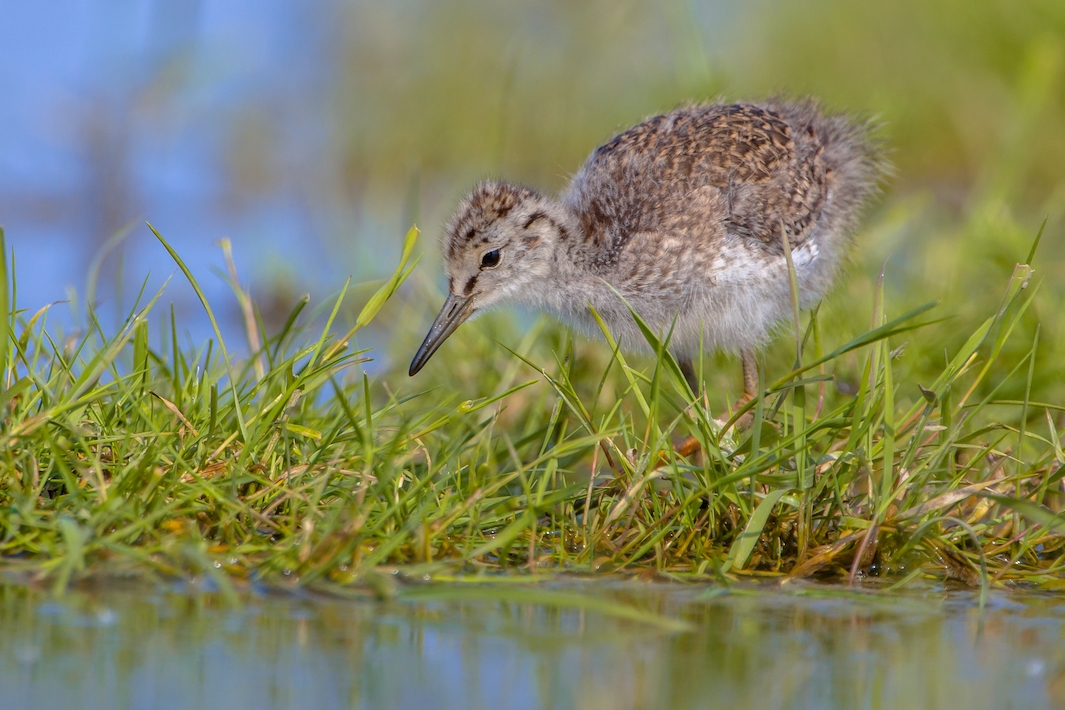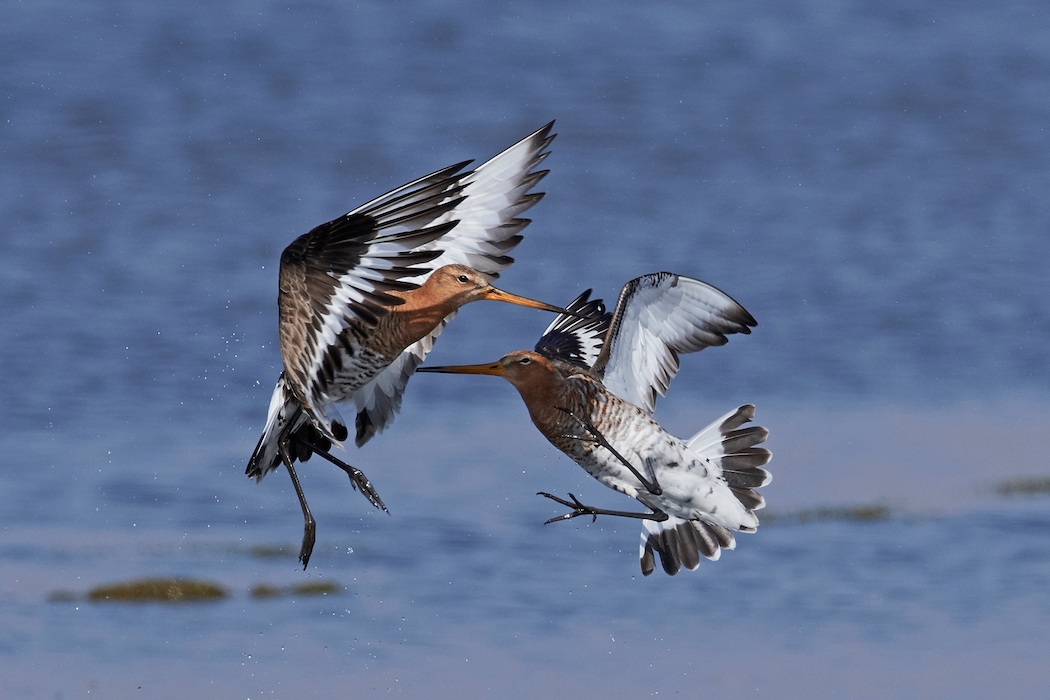 It is a species of a relatively large bird of the order of waders (Charadriiformes), family of sandpipers (Scolopacide). It is quite big, as it is clearly larger than other representatives of this group. It is also distinguished by contrasting coloration, which makes it easy to recognize it both while flying and standing on the ground.
It is a species of a relatively large bird of the order of waders (Charadriiformes), family of sandpipers (Scolopacide). It is quite big, as it is clearly larger than other representatives of this group. It is also distinguished by contrasting coloration, which makes it easy to recognize it both while flying and standing on the ground.
Males and females are almost identical – there is no sexual dimorphism in Black-tailed godwits, so characteristic for many other bird species. Mating colors of the representatives of both sexes include an intense rust color on their necks and breasts. When flying, Black-tailed godwits present wide black and white stripes on their wings.
The body length of a Black-tailed godwit is about 40 cm and the wingspan is 70–80 cm. When observed in the wild, the birds can usually be seen from a distance of several tens of meters or more and therefore may not seem so big.
In Podlasie, Black-tailed godwits nest in open areas, mainly in wet meadows located in valleys of the following rivers: Narew, Bug, Liwiec. They nest on the ground, but contrary to what one may expect, their nest is very difficult to find because it is a small hollow among the grasses, and their eggs have a color and pattern that make them blend in with their surroundings.
The availability of the food base, which is invertebrates in the topsoil, is a key factor in determining the attractiveness of a site to the birds. Earthworms are a major component of the Black-tailed godwits' diet. The birds capture them by sticking their long beaks into the ground. Other species of sandpipers obtain their food in the same way. Hence their presence is favored by a sufficiently high groundwater level: earthworms fleeing from the water move towards the surface and birds can easily catch them.
Black-tailed godwits return from their wintering grounds in March and lay their eggs in April and May. The period of sitting and care of the chicks lasts less than 2 months in total. It is hard to imagine such a rapid process of growth and maturity: chicks are able to fly as early as 4 weeks after hatching.
In September, the birds fly away to their wintering grounds, some of them spending the cold season on the Mediterranean coast, others in Sub-Saharan Africa.
The presence of these birds provides an amazing experience, especially since Black-tailed godwits actively defend their territory, screaming loudly while flying. Like many waders, they nest very willingly near the nests of other species. The birds occupy territories located at some distance from each other but individual pairs actively defend them. Therefore, this is not a typical colony like in case of Black-headed gull. Black-tailed godwits occupy their nests in a distance allowing them to see each other freely, but they do not look into each other's nests.
Such group nesting is now a very rare view. The number of Black-tailed godwits in Poland has been decreasing drastically since the way of using meadows has changed – they were favored by extensive grazing of cattle and horses, which was abandoned in the 1980s. Over time, mowing wet meadows also became unprofitable and so they were abandoned by farmers in the early 21st century. Poland's accession to the European Union and subsidies for farmers caused these areas to be mowed again. These were mostly packages promoting late mowing in August for Corncrake which meant too high vegetation for waders. In many areas, the opposite situation occurred: the use has intensified and meadows have been drained to be mowed several times a season. Unfortunately, early mowing causes losses in breeding. Land reclamation lowers groundwater levels which results in a lack of earthworms in the soil. An additional limiting factor is the presence of predators: mammals (foxes and American minks) and birds of prey. Under such unfavorable circumstances, the number of waders is dropping dramatically.


